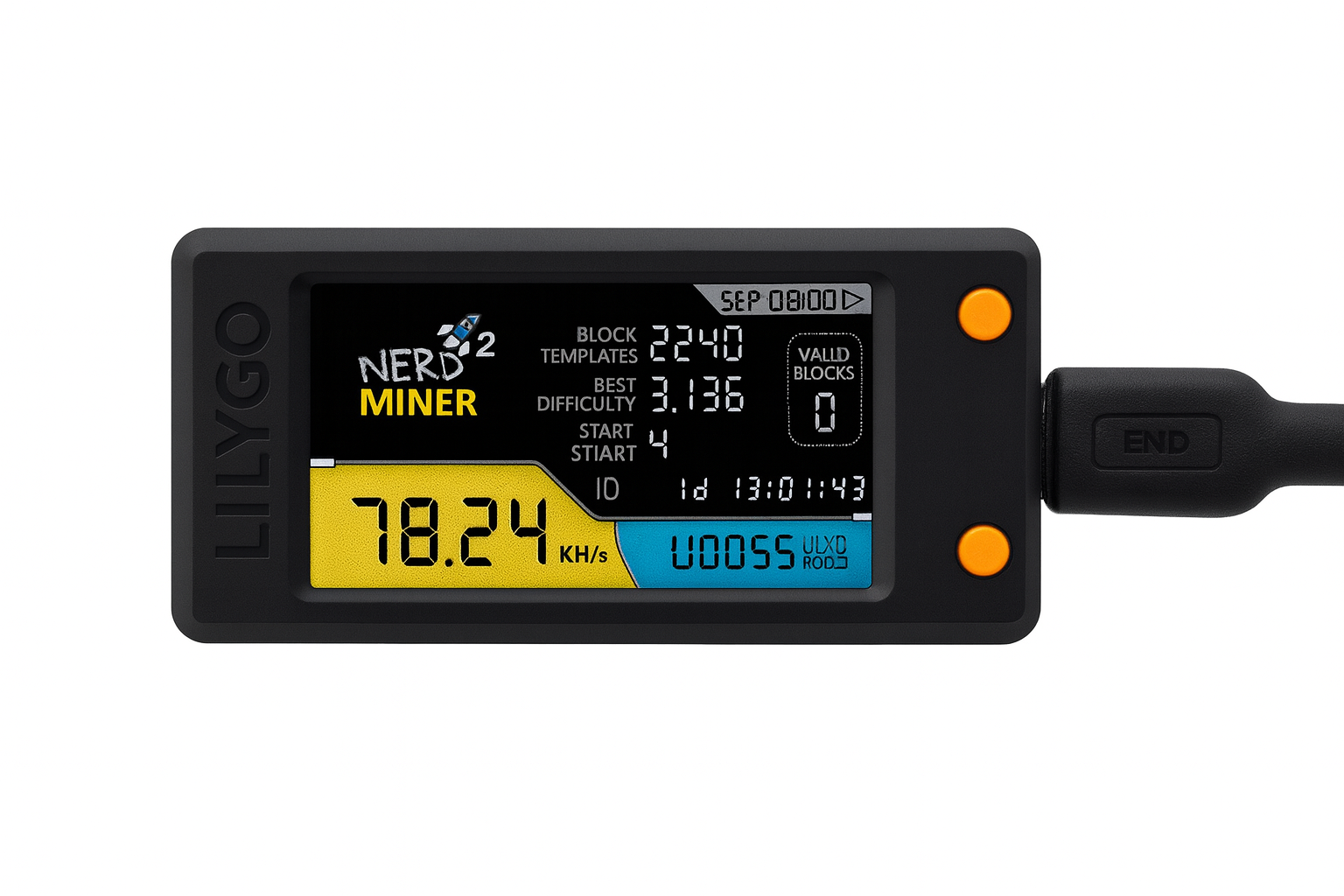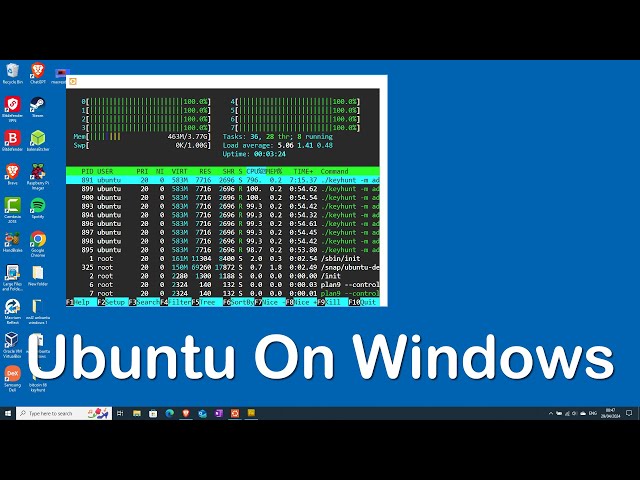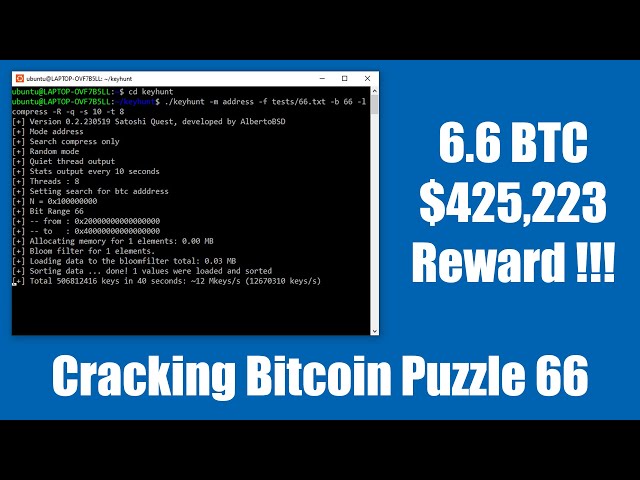Imagine a Bitcoin miner the size of a pack of gum, consuming about 1 watt of power, and offering you a tiny chance to win an entire Bitcoin block reward. That’s exactly what the Nerd Miner V2 promises. This mini “lottery” Bitcoin miner is a compact, open-source device designed more for education and fun than for profit. In this review, we’ll dive into what the Nerd Miner V2 is, how it works, and why it’s capturing the curiosity of tech hobbyists and total beginners alike.
What is the Nerd Miner V2?
The Nerd Miner V2 (sometimes called the NerdMiner V2 Solo Lottery Bitcoin Miner) is a small hardware gadget developed by BitMaker (under the Bitronics brand) for Bitcoin lottery mining enthusiasts. In simple terms, it’s a solo Bitcoin miner with a very low hash rate, meaning it performs Bitcoin mining computations at a modest speed (on the order of tens of thousands of hashes per second). Unlike industrial mining rigs that churn out terahashes, the Nerd Miner V2’s strength lies not in brute force but in offering a hands-on introduction to mining. It’s an open-source project and hardware kit that makes Bitcoin mining accessible to beginners without the huge investment or noise of professional miners. Priced at only a few tens of dollars, this device provides a cost-effective way to “dip your toes” into crypto mining as a learning experience.
How does it work? Essentially, the Nerd Miner V2 lets you attempt to mine Bitcoin blocks solo – which is why it’s dubbed a lottery miner. About every 10 minutes (each time a new block is found on the Bitcoin network), your Nerd Miner is hashing away, giving you a proverbial lottery ticket for a chance to solve the next block. If you miraculously succeed, you would earn the full block reward (currently 3.125 BTC plus all the transaction fees in that block). In practice, the odds of that happening with this tiny device are astronomically low – but the thrill is that it’s not zero. The Nerd Miner V2 packages this concept into a fun, plug-and-play gadget that runs quietly on your desk.
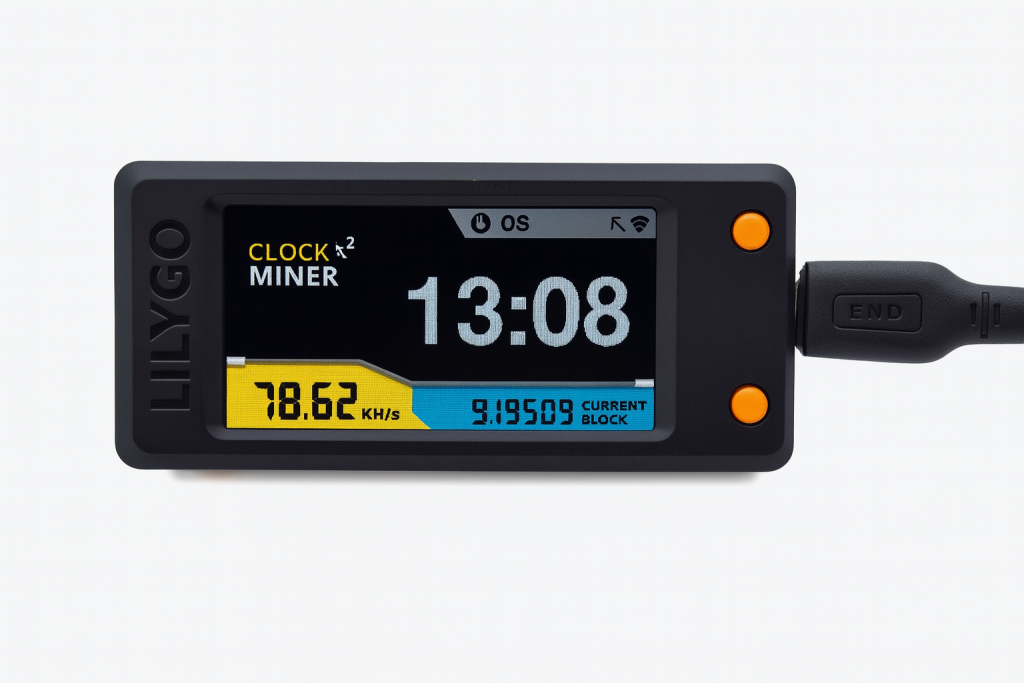
Lottery Mining Explained: Don’t Quit Your Day Job!
It’s important to understand the “lottery mining” concept, because it’s at the heart of what Nerd Miner devices do. In Bitcoin, solo mining means mining on your own, not joining any pool. Given the immense global mining competition, solo mining with low-power hardware is akin to buying a lottery ticket. Each hash your Nerd Miner computes is like a tiny chance (often quoted as 1 in many trillions) of hitting the jackpot by discovering a valid block. One Reddit user quipped, “It’s fun but financially it’s akin to buying a lottery ticket.” In other words, don’t expect regular payouts or any reliable income from a device like this.
To put the odds in perspective, the Bitcoin network’s total hash power is astronomically large – on the order of hundreds of exahashes per second (that’s quintillions of hashes every second). The Nerd Miner V2 by contrast hashes around 50–78 kilohashes per second (tens of thousands of hashes per second). This is an almost infinitesimal fraction of the network. One community member calculated that, at these speeds, it could take hundreds of thousands of years on average to successfully mine a block solo. So, financially, no – it’s not “worth it” as a profit-making miner. As another Bitcoin enthusiast succinctly put it: “Worth it in what way? Financially, no; education and fun, yes.”
The real value of the Nerd Miner is in the experience: it’s a novelty and educational tool. It allows you to participate in Bitcoin mining on a micro scale, learn how mining works, and have a cool piece of crypto tech to show off. The possibility (no matter how remote) of winning a 3.125 BTC block reward adds a layer of excitement, but it should be viewed as a bonus fantasy rather than a realistic goal. In short, think of the Nerd Miner V2 like a crypto lottery scratch card that never runs out – it continuously “scratches” hashes as long as it’s powered on, while you watch and learn.
Hardware and Features of Nerd Miner V2
The Nerd Miner V2 hardware inside an optional plastic case (front view with screen, and back view). The device uses a LilyGo T-Display S3 microcontroller board with a built-in 1.9″ color screen. Two orange buttons on the side allow you to navigate its on-screen menus. It’s a compact, fanless unit that can sit on your desk as a conversation piece.
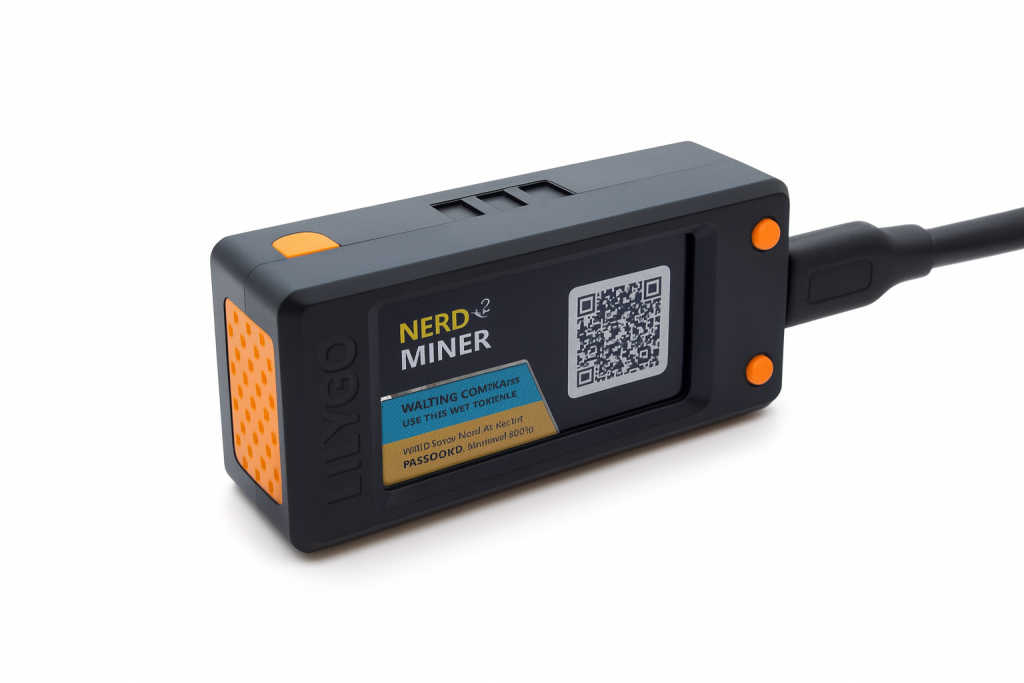
Despite its tiny size, the Nerd Miner V2 packs in some interesting features. The core of the device is an ESP32-S3 microcontroller (LilyGo TTGO T-Display S3 board) running custom mining firmware. This board includes a 1.9-inch color LCD display and a couple of buttons for input. The screen is one of the highlights – it displays real-time stats and information: your current hash rate (for example, ~50–78 kH/s), the number of hashes attempted, network difficulty, and even fun stats like how long the miner has been running or how many “lottery tickets” (hashes) you’ve generated. The firmware allows flipping through multiple display modes; for instance, you can view global Bitcoin network stats, a Bitcoin price ticker, a clock, or your mining statistics on the device’s screen. This makes the Nerd Miner not just a miner but also a mini crypto info display for your desk.
Physical design: The device is extremely compact – roughly 56.5 × 31.5 × 11 mm (about 2.2″ × 1.2″ × 0.4″). It’s essentially a bare printed circuit board with the screen and chips mounted, though some sellers or hobbyists provide a small plastic enclosure or stand. (In fact, the manufacturer LilyGo offers an optional snap-on case with a magnetic back, which lets you stick the Nerd Miner to a metal surface like a fridge!) The standard case is fanless – and since the power usage is so low (≈1 watt), cooling isn’t really an issue. The unit runs silently with no moving parts, and only a single USB-C port is needed for power. Because it’s so low-power, you can leave it plugged in 24/7 without noticing any difference on your electric bill or any heat/noise – it’s about like charging a phone or running an LED nightlight in terms of energy draw.
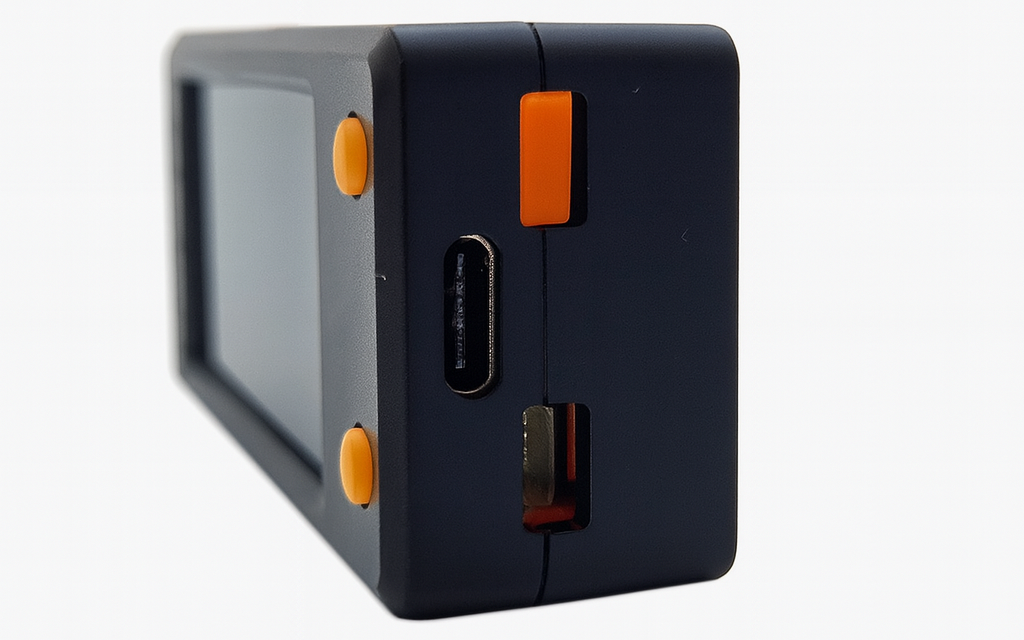
Connectivity: The Nerd Miner V2 has built-in Wi-Fi (via the ESP32 chip’s Wi-Fi module) and can also do Bluetooth, though Wi-Fi is what’s used for mining. There’s no Ethernet port – the idea is you can place this little miner anywhere in your home within Wi-Fi range. It connects over the internet to a mining pool or to your own Bitcoin node (depending on configuration). Notably, the community has set up special “solo mining pools” optimized for low-hash devices. For example, the default firmware now points to the Public Pool (public-pool.io) which is specifically designed for tiny lottery miners so they can get work and track stats efficiently. The Nerd Miner V2’s firmware is regularly updated (it’s an active open-source project), and recent updates improved pool compatibility and added the dedicated NerdMiner-friendly pool. This means even though your hashrate is small, you can still connect and participate without the usual issues (many big pools won’t accept such a low-power miner’s shares at all).
All the software on the device is open source and community-driven. Users can even customize or update the firmware via a simple USB flash tool if they want to tinker. In essence, the Nerd Miner V2 is as much a DIY kit as it is a product – you’re encouraged to poke around, learn, and even modify it. The hardware design and firmware are openly available on GitHub, and there’s a vibrant community of makers and crypto enthusiasts contributing to improvements.
Setup and User Experience
One of the best aspects of the Nerd Miner V2 is that it’s beginner-friendly. You don’t need to be a programmer or have any experience with mining to get it running. The device comes pre-flashed with the mining firmware, so you simply supply power via USB (you can plug it into any USB charger or a computer’s USB port) and go through a quick Wi-Fi configuration. When first powered on, the Nerd Miner will broadcast a Wi-Fi access point (named “NerdMinerAP”) to which you connect with a phone or laptop. Through this, you access a simple configuration page where you input your home Wi-Fi credentials (so the miner can get online) and your Bitcoin wallet address (so that if luck strikes and a block is found, the reward knows where to go). After that, the device will reboot, connect to your Wi-Fi, and start mining. It’s essentially plug, connect, and play – “simply connect to your Wi-Fi, input your Bitcoin address, and start mining,” as one description puts it.
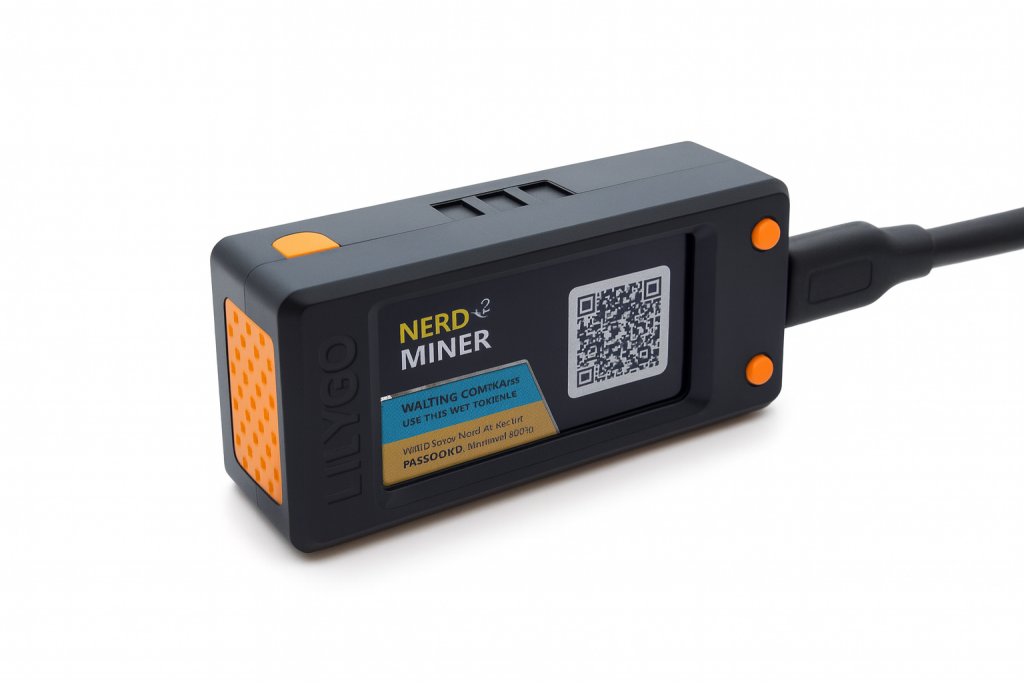
From the user’s perspective, once it’s running, the Nerd Miner requires almost no maintenance. It will happily sit there crunching numbers, cycling through its display screens. If your Wi-Fi goes down or you need to change settings, there are button combinations to reset or reconfigure, but day-to-day you won’t need to interact with it much beyond glancing at the stats on the screen. Those stats can actually be quite fun to watch – the visual interface shows things like how many hashes you’ve done cumulatively (you’ll quickly reach millions, then billions of hashes), and a timer of how long the miner has been up. It’s almost like a little tech toy that gamifies Bitcoin mining. Some owners compare it to those Tamagotchi pets or idle clicker games – except here the “game” is trying to find a Bitcoin block by sheer luck.
Because it’s Wi-Fi enabled, the Nerd Miner can also sometimes be monitored via the pool’s website. For instance, on public-pool.io you could enter your address and see your worker (the Nerd Miner) and check that it’s submitting work. However, unlike traditional mining, you won’t accumulate partial earnings – it really is all-or-nothing (lottery style). If a block find ever occurs, it would show up as a huge win; otherwise, you just see your effort in number of hashes. The device will show “Valid Blocks: 0” (until the day that 0 might turn into 1!). Part of the fun is knowing that the odds are against you, but still rooting for that 1 in a trillion chance. It’s a bit like running a tiny node that actually is competing (albeit very, very slightly) with the big miners.
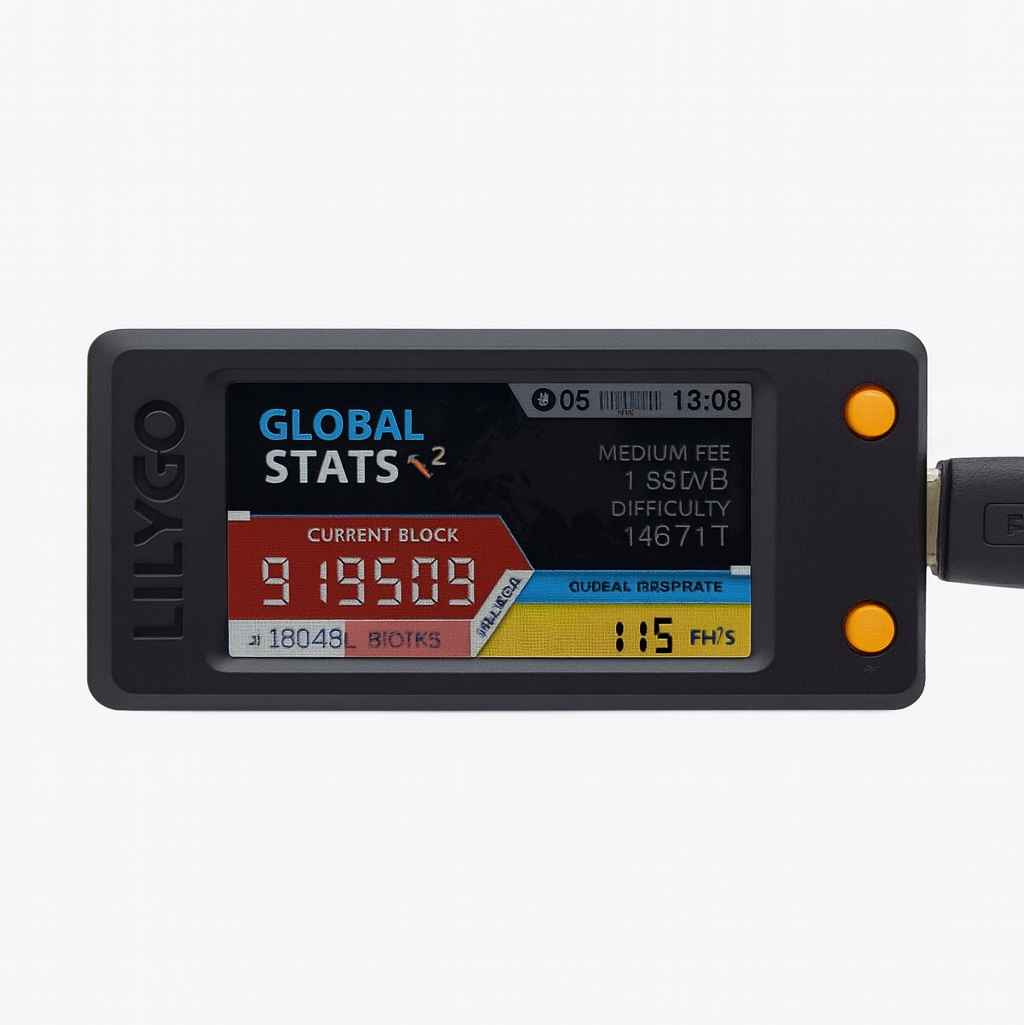
Performance and Expectations
When discussing performance of the Nerd Miner V2, it’s less about how fast it mines (since we already know it’s about 50–78 kH/s in speed and more about understanding what those numbers mean. In plain terms: the Nerd Miner is millions of times slower than a modern Bitcoin ASIC miner. High-end Bitcoin mining machines today operate in the range of 100–300 terahashes per second (that’s 100 trillion hashes per second). The Nerd Miner’s tens of thousands of hashes per second are so small that, statistically, your chance of finding a block is virtually zero in any given year. Another way to frame it: if a top ASIC miner is like a jet plane, the Nerd Miner is like a paper airplane – both fly, but one isn’t getting you across the ocean.
So, if you’re thinking of buying a Nerd Miner V2, set your expectations accordingly. You will almost certainly never mine any bitcoin with it. It’s not a device you measure ROI (return on investment) on – because in financial terms, there likely won’t be one. The real “return” is the knowledge and enjoyment you get. For example, by using the Nerd Miner, you learn firsthand about concepts like hash rate, difficulty, mining pools, block intervals, etc. It demystifies the mining process in a way that reading about it might not. You also get a nifty conversation starter for when friends see it on your shelf: “Is that really mining Bitcoin right now?!” – which can lead into educational conversations.
From a power usage standpoint, the Nerd Miner V2 is incredibly efficient. It draws roughly 1 watt of power when running, which is negligible – even if left on 24/7, it costs only a few cents of electricity per month in most places. So you don’t need to worry about energy cost at all. In fact, the project creators encourage leaving it running continuously as a way to contribute (however minimally) to Bitcoin’s decentralization – “every hash produced by the NerdMiner V2 reinforces the decentralized foundation of Bitcoin,” as one vendor puts it. Realistically, one tiny miner won’t affect the network, but as a principle it’s a neat idea that thousands of people running tiny miners adds to the geographic spread of mining activity.
Now, you might wonder: has anyone ever actually hit the jackpot with a Nerd Miner? To date, there are no public reports of a NerdMiner finding a block, and it’s very likely none has (if one did, the lucky winner could choose to remain anonymous, of course). However, in Bitcoin’s history there have been a few instances of small solo miners finding a block against all odds – so it’s not impossible. Think of it as winning the Powerball: someone eventually wins, but it’s usually not going to be you. In this vein, there are even online calculators where you can input 50 kH/s and see your odds (sites like solochance.org will basically tell you the probability is so close to zero that it might as well be zero!). The takeaway is clear: don’t buy this device expecting profit. Buy it because you find it cool, or you want to learn, or you enjoy the slim thrill of “what if…?” while knowing the reality.
In terms of reliability, the Nerd Miner V2 does its simple job quite steadily. There’s not much that can go wrong – as long as it has power and Wi-Fi, it will keep hashing. Some users have noted that you should ensure your Wi-Fi network has a 2.4 GHz signal (the ESP32 only supports 2.4 GHz Wi-Fi, not 5 GHz), which can be an issue if you have a router that doesn’t broadcast 2.4 GHz by default. But once connected, there’s little upkeep. The device doesn’t overheat (it may get just mildly warm to the touch). If you want to apply firmware updates for new features or improvements, it’s as simple as connecting via USB and using a web-based flasher tool – but if you’re not a tinkerer, even that isn’t necessary unless you care about the latest bells and whistles.
Nerd Miners as a Whole: Community and Upgrades
It’s worth noting that the Nerd Miner V2 is part of a broader “nerd mining” community project. The concept began with earlier versions (a Nerd Miner V1 existed as a proof of concept), and because everything is open source, many enthusiasts have built upon it. For example, there are community mods and upgrades – some enterprising tinkerers have hooked up multiple ESP32 boards or used higher-clocked chips to increase hashrate. There are reports of “dual NerdMiner” rigs or a NerdMiner Turbo that push towards a few hundred kH/s. One listing even touted a 1005 kH/s “Big” NerdMiner which essentially packs many of these boards together. Of course, even 1000 kH/s (1 MH/s) remains far, far from competitive levels, but it shows how the community likes to experiment and squeeze out every bit of performance for fun.
The developers of Nerd Miner (BitMaker and collaborators) have been actively releasing firmware updates that add features and improve the experience. For instance, firmware v1.6.0 introduced the specialized NerdMiner mining pool integration to replace relying on a third-party solo pool. Updates have also enhanced the display info and stability. Because of the open nature, the project benefits from contributions globally – people create 3D-printed case designs, share setup tips, and even discuss alternative uses (the hardware could be repurposed for other SHA-256d coins like Litecoin’s testnet or Bitcoin Cash, though the main intent is Bitcoin). There’s a friendly vibe in the community of “nerd miners” – they know it’s not about getting rich; it’s about learning and camaraderie.
For those interested in delving deeper, there’s an official GitHub page and even a Discord server where Nerd Miner users hang out. Newcomers are welcome to ask questions and share their NerdMiner V2 setups. Some owners display theirs alongside full-size Bitcoin mining rigs, others keep it next to a PC or on a nightstand as a constant reminder of Bitcoin’s engineering marvel. It’s almost like owning a little piece of Bitcoin mining history in your hand – a modern ASIC miner is a black box, but a Nerd Miner is something you can fully grasp and explain to a child: “See this number changing rapidly? That’s the device hashing – trying millions of combinations to solve a Bitcoin block!” It brings the abstract concept of mining into tangible form.
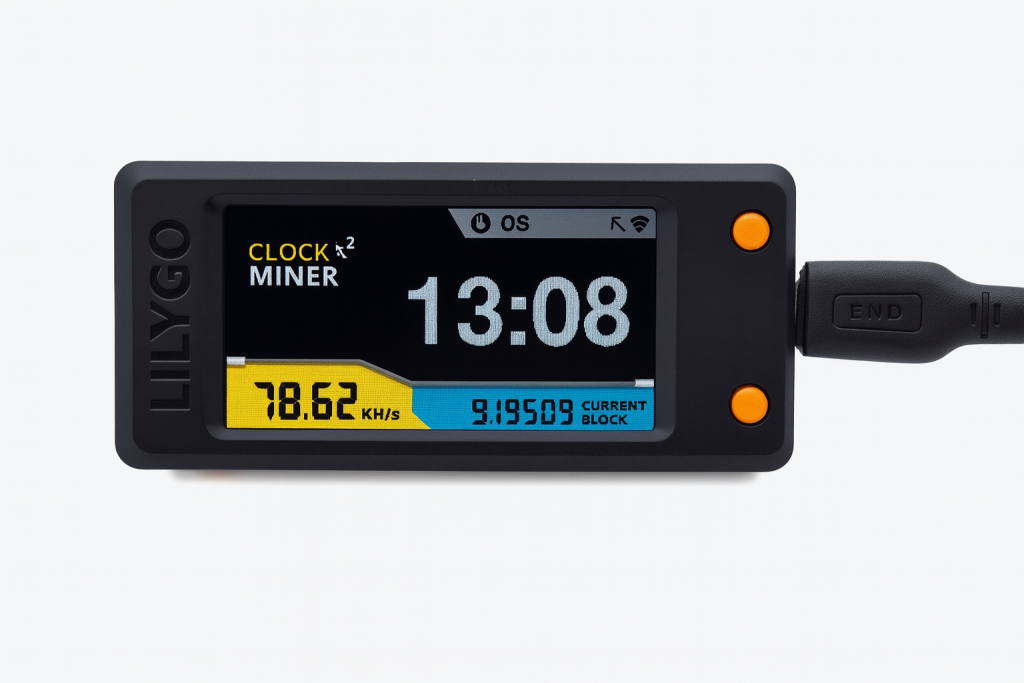
Final Thoughts
The Nerd Miner V2 is, in many ways, the ultimate Bitcoin geek toy. It takes the serious business of Bitcoin mining and packages it into a fun, low-cost gadget that anyone can play with. For total beginners, it’s an educational introduction to the world of cryptocurrencies – you learn by doing, without risking much money or dealing with complex setups. For tech hobbyists, it’s an opportunity to build and customize a mini miner, tinker with open-source firmware, and join a niche community of like-minded “nerd miners.” And even for seasoned Bitcoin folks, it’s a cool collectible that can sit on your desk blinking away as a conversation piece.
Crucially, keep your expectations grounded. Think of the Nerd Miner V2 as an interactive Bitcoin mining lesson rather than a mining investment. You probably won’t get rich (in fact, you’ll likely never earn a cent), but you will gain a richer understanding of how mining works under the hood. Watching your device display “78.3 kH/s” and realizing the global network is 15 orders of magnitude larger can be a humbling lesson in what secures Bitcoin. On the flip side, the dream of “what if I find a block?” can make you feel briefly like Charlie with a lottery ticket to Willy Wonka’s factory – and that bit of excitement is fun in itself.
So, is the Nerd Miner V2 worth it? If you ask the Bitcoin community, the consensus is: Financially, no – but for education and fun, absolutely yes. It’s an inexpensive way to own a tiny part of the Bitcoin mining ecosystem and learn by hands-on experience. Whether you’re a student, a hobbyist, or just crypto-curious, the Nerd Miner V2 offers a friendly doorway into the otherwise intimidating world of Bitcoin mining. Just plug it in, connect the Wi-Fi, and let it chug along – you’ll have a front-row seat to the lottery that is Bitcoin mining, all from the comfort of your own home. And who knows – while you shouldn’t count on it, you just might get lucky someday. In the meantime, you’ll have gained knowledge and a neat story to tell, which are rewards in their own right.
Sources:
- NerdMiners Official Blog – “What Is A NerdMiner?” nerdminers.com
- D-Central Tech – “What is a NerdMiner? Educational Tool and Entry-Level Mining Device” d-central.techd-central.tech
- Reddit r/Bitcoin – Discussion on NerdMiner V2 value and odds reddit.com
- Altair Technology Product Page – NerdMiner V2 (specifications and description) altairtech.io

